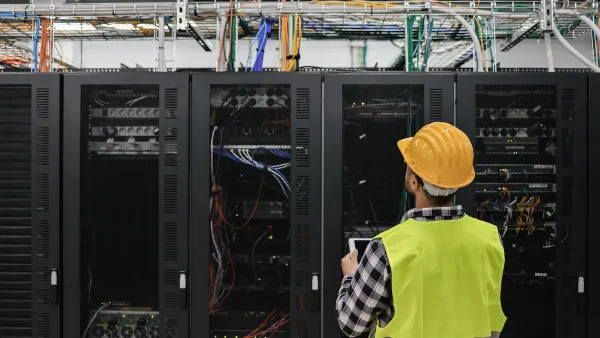A new report released last week documents the energy use of New York's largest buildings for the first time ever. It's the first step in tackling the source of two-thirds of the city's greenhouse gas emissions.
According to Mireya Navarro, the new report, released last week by New York City's Office of Long-Term Planning and Sustainability delivered some fascinating, and unexpected, findings. Among the results reported in the study, mandated by a 2009 law intended to help reduce the city's greenhouse gas emissions, "the least-efficient residential buildings were found in neighborhoods that also reported high asthma rates," and Williamsburg (11211) in Brooklyn and Richmond Town (10306) on Staten Island were the most energy efficient neighborhoods in the city, reports Navarro. Sharp discrepancies in energy usage among buildings of comparable size and use were also reported.
The study covered individual buildings of over 50,000 square
feet and multiple-building properties with a total of more than 100,000
square feet, which although making up just 2 percent of the city's one million buildings, "account for 45 percent of the energy used by all New
York buildings."
Perhaps the most important finding: "if poor-performing buildings in the city improved their
efficiency and reached just the median level of energy use in their
categories, the city's energy consumption would decline by at least 18
percent and greenhouse gas emissions would be cut by 24 percent," writes Navarro.
FULL STORY: Wide Differences Found in Buildings’ Power Use

Analysis: Cybertruck Fatality Rate Far Exceeds That of Ford Pinto
The Tesla Cybertruck was recalled seven times last year.

National Parks Layoffs Will Cause Communities to Lose Billions
Thousands of essential park workers were laid off this week, just before the busy spring break season.

Retro-silient?: America’s First “Eco-burb,” The Woodlands Turns 50
A master-planned community north of Houston offers lessons on green infrastructure and resilient design, but falls short of its founder’s lofty affordability and walkability goals.

Test News Post 1
This is a summary

Analysis: Cybertruck Fatality Rate Far Exceeds That of Ford Pinto
The Tesla Cybertruck was recalled seven times last year.

Test News Headline 46
Test for the image on the front page.
Urban Design for Planners 1: Software Tools
This six-course series explores essential urban design concepts using open source software and equips planners with the tools they need to participate fully in the urban design process.
Planning for Universal Design
Learn the tools for implementing Universal Design in planning regulations.
EMC Planning Group, Inc.
Planetizen
Planetizen
Mpact (formerly Rail~Volution)
Great Falls Development Authority, Inc.
HUDs Office of Policy Development and Research
NYU Wagner Graduate School of Public Service




























